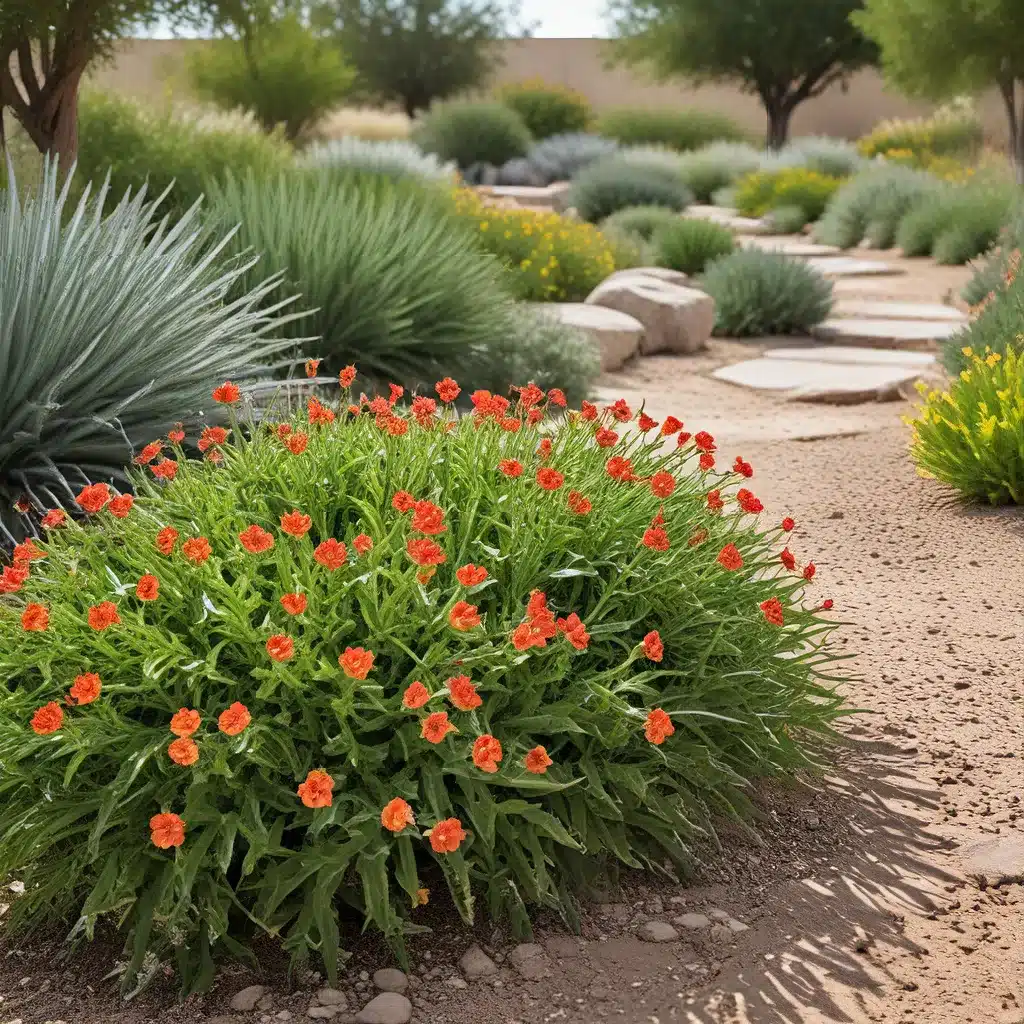
As a California native, I’ve always been fascinated by the unique and resilient flora that thrive in our diverse climate. Growing up, I remember my grandparents’ lush, vibrant garden – a true oasis amidst the dry, rolling hills. But over the years, as droughts became more frequent and water restrictions tightened, their once-verdant landscape started to wither. It was a sobering reminder of the importance of sustainable landscaping practices.
Embracing Xeriscaping: The Art of Water-Wise Gardening
These days, when I look around my neighborhood, I see more and more homeowners embracing the art of xeriscaping – landscaping with drought-tolerant and native plants to conserve water. It’s a refreshing shift, not just for the environment, but also for our wallets. After all, maintaining a thirsty lawn can be a real drain on both our resources and our bank accounts.
Sustainable landscaping is about more than just swapping out grass for gravel and cacti. It’s about creating a vibrant, diverse ecosystem that not only looks beautiful but also helps to combat climate change and protect our local wildlife. By carefully selecting plants that are adapted to our Mediterranean climate, we can reduce water usage, minimize maintenance, and create a haven for pollinators and other beneficial creatures.
Putting Down Drought-Tolerant Roots
One of the key principles of sustainable landscaping is choosing the right plants for the job. Drought-tolerant plants, such as California natives, are designed to thrive in our dry climate with minimal water requirements. Think of them as the superheroes of the plant kingdom – they can withstand long periods of drought, bounce back from intense heat, and even survive the occasional frost.
As I stroll through my local nursery, I’m always amazed by the diverse array of drought-tolerant plants on offer. From the vibrant purple blooms of the California Lilac to the delicate, feathery fronds of the Arbutus Tree, there’s a whole world of beauty to discover. And the best part? Many of these plants require far less water than their thirstier counterparts, making them a smart choice for any water-conscious homeowner.
Harnessing the Power of Rainwater
Of course, sustainable landscaping isn’t just about choosing the right plants. It’s also about implementing smart water management strategies to make the most of the resources we have. One of the most effective ways to do this is by capturing rainwater and using it to nourish our gardens.
Rainwater collection systems, such as rain barrels or underground cisterns, can help us store precious precipitation for later use. This not only reduces our reliance on municipal water supplies but also helps to prevent runoff and erosion – two common issues in many urban and suburban landscapes.
As I’ve discovered, there are plenty of creative ways to incorporate rainwater harvesting into our outdoor spaces. From simple rain gardens that channel excess water into swales and berms to more elaborate systems that divert runoff into underground storage tanks, the possibilities are endless. And the best part? These water-wise features can actually enhance the aesthetic appeal of our landscapes, turning them into true oases of sustainability.
Cultivating a Healthy, Resilient Soil
But sustainable landscaping isn’t just about what we plant and how we water. It’s also about nurturing the foundation that supports it all – the soil. After all, healthy soil is the key to a thriving, low-maintenance garden.
Compost and mulch are two of the essential ingredients for building rich, nutrient-dense soil. By adding these organic materials to our gardens, we can improve the soil’s water-holding capacity, reduce weed growth, and provide a steady supply of nutrients for our plants. It’s a win-win-win situation!
But the benefits of healthy soil don’t stop there. By sequestering carbon and reducing erosion, well-nourished soil can also play a crucial role in combating climate change and protecting our local ecosystems. It’s like a hidden superpower that we can harness right in our own backyards.
Cultivating a Sustainable Future, One Garden at a Time
As I reflect on the journey of sustainable landscaping, I’m reminded of the old saying “from little acorns, mighty oaks do grow.” Because when it comes to creating a more eco-friendly future, even the smallest of steps can make a big difference.
Whether you’re a seasoned green thumb or a complete novice, Reading General Contractor is here to help you create a drought-tolerant, water-wise landscape that not only looks beautiful but also helps to preserve our precious natural resources. So why not start your journey towards a more sustainable future today? Your garden – and the planet – will thank you.
Related posts:
No related posts.




